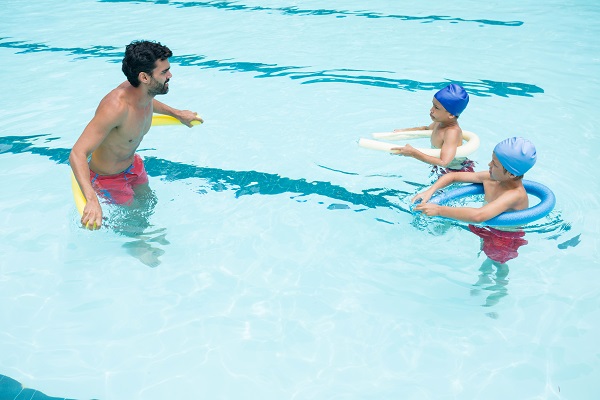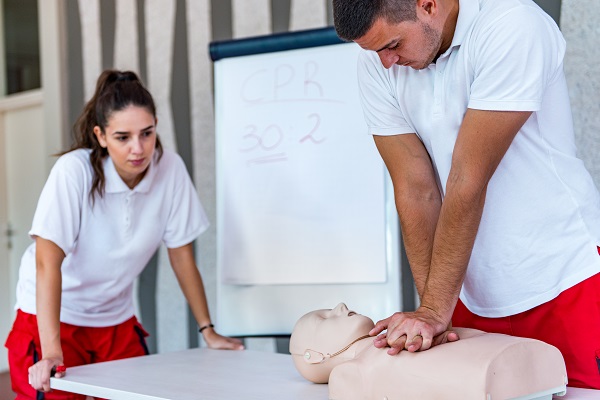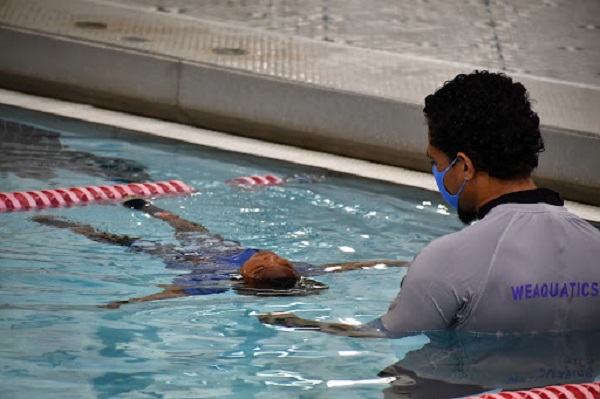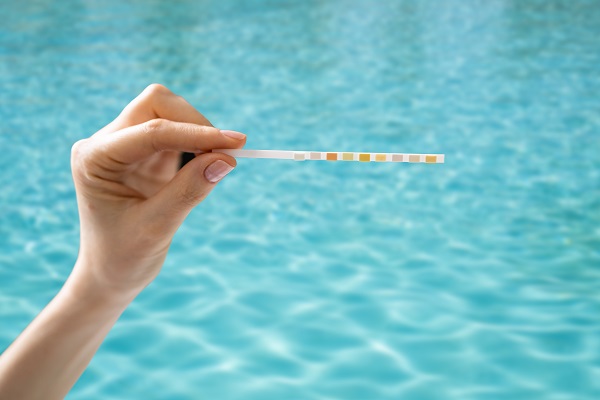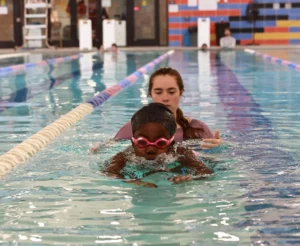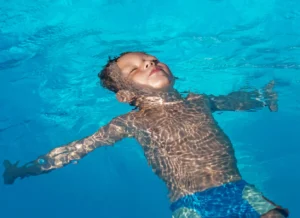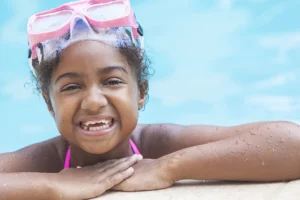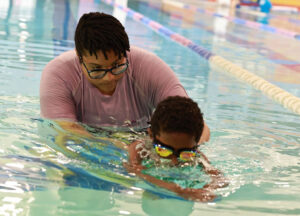What Every Parent Should Know about Water Safety
From birthday pool parties to summer neighborhood get-togethers with swimming, pools are a fun way to beat the heat for kids and parents alike. Before diving in to make sure you and your family are armed with these six pool safety tips:
1. Talk about Pool Safety with Your Children
As a parent, it’s not pleasant to think about, but drowning is the leading cause of preventable death for children one to four years old. (See some of the stats here.) Talking about water safety with your child is one of the best and easiest ways to keep your kiddos safe in and near pools.
Make it clear that water can be fun, but it can also be dangerous.. Enforce (and then reinforce) the idea that your child should never swim without an adult present.
2. Assign a Designated “Watcher”
Whenever there are children playing near or in a pool, there should always be at least one person specifically designated to watch. Always. It’s not enough to think all the children will be safe because adults are around. Remember: when everyone is watching, no one is watching!
Take turns with this role to avoid fatigue or complacency. For a visual reminder of the significance and importance of this role, you can even create a “water watcher” badge to pass when you change shifts.
3. Eliminate Distractions
If you’re the one watching children swim, it requires your constant attention. Children can drown in less than a minute, and it often doesn’t involve the flailing and hollering you see in movies or on television. Children drown silently and quickly. If you’re distracted by anything—a book, a magazine, your phone—it can have tragic consequences.
4. Be the First Line of Defense
Preparing for the worst-case scenario is one of the best ways to help ensure water safety for you and your family. Even if you don’t live near water or own a pool, water safety is still critical. (Remember, every child will encounter drowning hazards. Ponds. Bathtubs. Puddles around your home. Any standing water can pose a danger.)
Take a CPR class, and get recertified or take a refresher if you ever feel you’ve forgotten the essential points. Keeping a heart beating while you wait for emergency responders to arrive can make all the difference.
5. Know the Risks and the Facts
There’s a lot of misinformation about drowning, and arming yourself with knowledge can help you and your family be better prepared. Here are just a few drowning-related facts that surprise many parents:
- ⚈ Children can drown in less than two inches of water. (See more information here.)
- ⚈ Children often drown silently. You can’t rely on screaming to alert you to a child in distress.
- ⚈ Pool toys are not flotation devices. Yes, water wings, pool noodles, and inner tubes all float, but they can’t be relied on to prevent drowning. A life jacket approved by the US Coast Guard should always be worn, but even that isn’t a guarantee of complete water safety. Even a child wearing the proper flotation device should be supervised.
6. Make Swimming Lessons a Priority
The best way to help ensure your kids are safe in and around water is to enroll them in swimming lessons. This will give them the skills and confidence they need, even if they manage to fall into water while unsupervised.
No one tactic is the full answer, and when it comes to water safety, you should always have a multilayered plan of defense (fencing, adult supervision, and swimming lessons, for example). However, if the child has a level of comfort and proficiency in the water, it could be the thing that saves his or her life.
Swimming lessons aren’t just for children, though. Make sure you have enough confidence and skill in the water to save your child, if need be. Check out our Learn-To-Swim program for more information about adult swim lessons.
*Bonus* At-Home Pool Tips
If you have a pool at your home, here are a few additional tips.
-
⚈ Regularly Service and Check Your Pool
The water in your pool should always be clean and clear. This not only helps you see if a child is in distress but it reduces the chance of waterborne illnesses. Make sure all elements of your pool are functioning properly and safely, including drains, which can suction and trap young children.
-
⚈ Clean Up
Little kids are three things that can quickly add up to trouble: mobile, fast, and curious. If you leave a bunch of floaty toys lying around, that can draw the attention of unsupervised children to the pool. Always leave your pool area clean and free of alluring toys, and cover the pool whenever it’s not in use, if possible.
-
⚈ Always Have a Fence
Any body of water a child could fall into should have a secure fence around it. This goes for underground pools, aboveground pools, and ponds. Check regularly that the fence is sturdy, does not contain any missing boards or slats, and latches properly. Some gates even have sensors and will buzz when opened, alerting you every time someone has entered the pool area.
-
⚈ Prepare Friends, Relatives, and Neighbors for Water Safety
You and your family won’t always be the only ones using your pool. To prepare for friends, relatives, or neighbors coming by, make sure there’s clear signage by the pool to illustrate step-by-step CPR instructions. Also, have your address somewhere prominent and either laminated or written in permanent pen. This way, anyone who calls 911 will be able to give responders your exact address quickly and accurately.
Ready to sign up for swim lessons? Explore what classes we offer, and then enroll today, or feel free to contact us with any questions.

